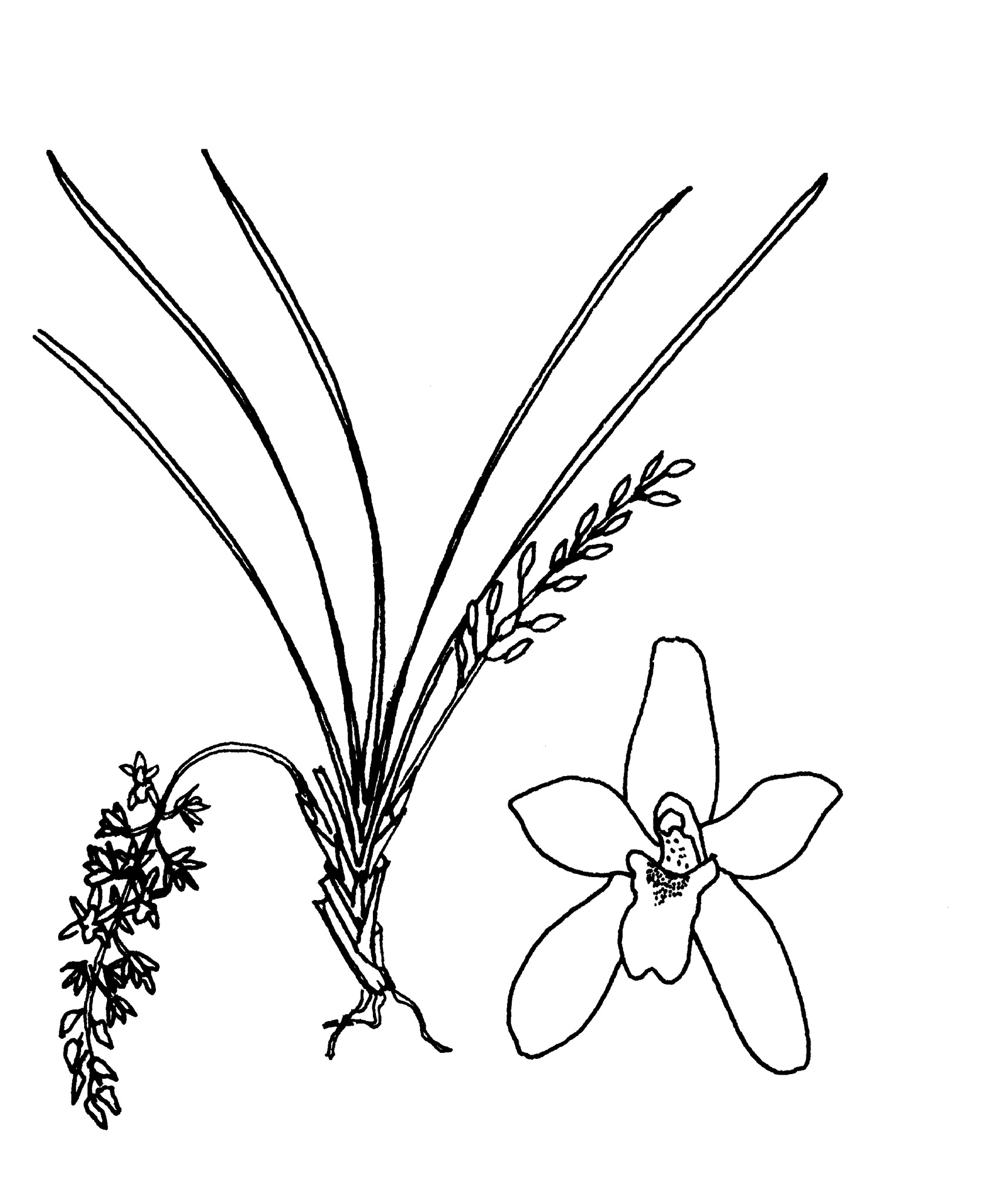
Greek kymbes – boat-shaped; idium – diminutive suffix; an apparent allusion to a small boat-shaped recess found on the labellum of some species.
Epiphytic, epilithic or rarely terrestrial herbs, sympodial, with creeping rhizomes. Stems usually thickened into short stout pseudobulbs, usually dense, green. Leaves lateral and/or apical, 2 to several, leathery, stalkless. Inflorescences basal racemes, erect or pendent. Flowers resupinate, 2-many, small to large, variously coloured. Sepals and petals similar, free, spreading or curving forward. Labellum 3- lobed, free or attached to base of column, side lobes erect around column, midlobe curved under. Column long, narrow. Pollinia 2 or 4, triangular.
About 50 species from India, China, SE Asia, New Guinea and Australia.
Thickened pseudobulbs sheathed by persistent leaf bases; usually many flowered arching inflorescences from bases of pseudobulbs; many long arching leaves.
Du Puy & Cribb (1988).
Source: (2005). Orchidaceae. In: . Horticultural Flora of South-eastern Australia. Volume 5. Flowering plants. Monocotyledons. The identification of garden and cultivated plants. University of New South Wales Press.
